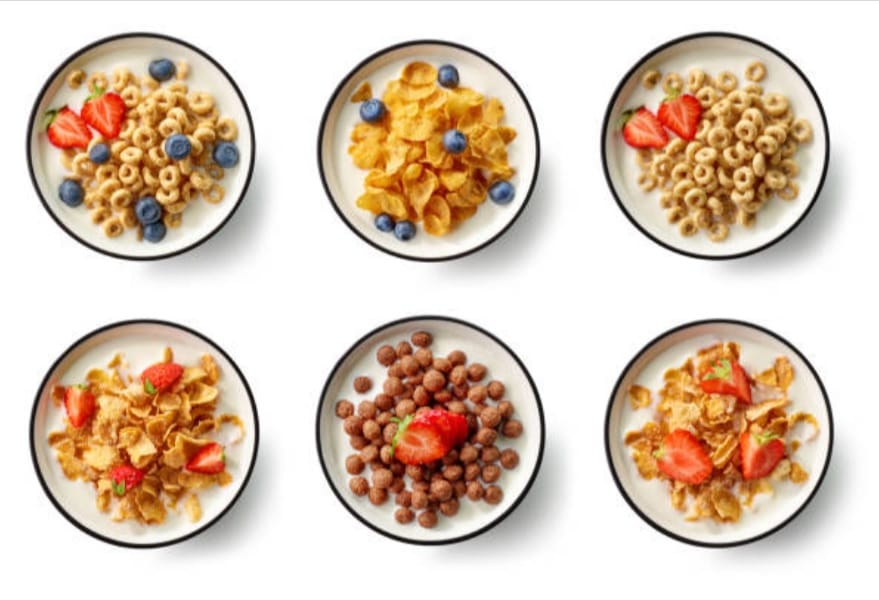The ketogenic diet, or keto for short, has gained immense popularity in recent years due to its potential benefits, such as weight loss, improved energy, and better mental clarity. The keto diet is a low-carb, high-fat diet designed to put your body in a state of ketosis, where it burns fat for fuel instead of carbohydrates. One of the challenges of following this diet, however, is finding suitable alternatives for foods that are typically high in carbs—like cereal. This is where keto cereal comes into play
For many people, cereal is a go-to breakfast option. It’s quick, easy, and convenient. But traditional cereals are loaded with sugar and carbohydrates, making them unsuitable for a ketogenic lifestyle. In this blog post, we’ll dive deep into what keto cereal is, whether cereals are keto-friendly, and how to choose the best option. We’ll also look at the nutrition facts for the keto diet, whether keto cereals spike blood sugar, and the benefits of keto cereal for diabetics.
Table of Contents
- What is Keto Cereal?
- Are Cereals Keto-Friendly?
- Benefits of Keto Cereal
- Nutrition Facts for the Keto Diet (in Tabular Format)
- Does Keto Cereal Spike Blood Sugar?
- Keto Cereal for Diabetics
- How to Choose the Best Keto Cereal
- Keto Cereal Recipes
- Conclusion
1. What is Keto Cereal?
Keto cereal is a low-carb, high-fat alternative to traditional breakfast cereals. It is designed specifically for people following the ketogenic diet, which restricts carbohydrate intake to a minimal level. While most store-bought cereals are full of sugar and grains, keto cereals use low-carb ingredients like seeds, nuts, coconut, and protein isolates. These cereals are often sweetened with keto-friendly sweeteners like stevia, erythritol, or monk fruit, making them a great choice for those who want to satisfy their cereal cravings without breaking their diet.
2. Are Cereals Keto-Friendly?
To answer the question, “Are cereals keto-friendly?”, the short answer is: no, traditional cereals are not keto-friendly. Most cereals you’ll find at the grocery store are loaded with carbohydrates, especially from grains like wheat, corn, oats, and rice. Even the “healthier” options often contain sugars or high-glycemic fruits, which can quickly kick you out of ketosis.
Here’s a quick look at why most cereals aren’t keto-friendly:
- High in Carbohydrates: Many cereals contain over 30-40 grams of carbs per serving, well above the daily carb limit on a keto diet (typically 20-50 grams).
- Added Sugars: Even “whole grain” or “low-fat” cereals often have added sugars, which can raise blood sugar levels and hinder ketosis.
- Grains and Processed Ingredients: Grains are a staple ingredient in most cereals, but they are high in carbs and are not part of a keto-friendly food list.
However, keto cereal is an exception because it is specifically formulated to be low in carbs and free from grains and sugars that can disrupt ketosis.
3. Benefits of Keto Cereal
Now that we’ve established that most cereals are not keto-friendly, let’s take a look at the benefits of choosing keto cereal:
- Low in Carbs: The primary benefit of keto cereal is that it’s low in carbohydrates, making it suitable for anyone on a ketogenic diet.
- High in Healthy Fats: Keto cereals often contain healthy fats from nuts, seeds, and coconut. Fats are crucial in a keto diet because they provide the necessary fuel for your body while in ketosis.
- No Sugar: Keto cereals are typically free of refined sugars, making them suitable for people looking to avoid blood sugar spikes.
- Convenient: Just like traditional cereals, keto cereals are a quick and convenient breakfast option. You can pour a bowl with some unsweetened almond milk and enjoy a low-carb, keto-friendly meal in minutes.
- Variety of Flavors: Many keto cereal brands offer a wide range of flavors, from chocolate to cinnamon to fruity, allowing you to enjoy your favorite tastes while staying in ketosis.
4. Nutrition Facts for the Keto Diet
Before diving into more about keto cereals, it’s essential to understand the general nutrition requirements of a keto diet. The ketogenic diet typically follows these macronutrient ratios:
- Fats: 70-80% of total calories
- Proteins: 20-25% of total calories
- Carbohydrates: 5-10% of total calories
Below is a table that outlines the general nutrition facts for a typical keto diet:
| Nutrient | Percentage of Daily Intake | Notes |
|---|---|---|
| Carbohydrates | 5-10% | 20-50 grams per day to maintain ketosis |
| Fats | 70-80% | Focus on healthy fats like avocados, nuts |
| Proteins | 20-25% | Moderate protein to support muscle repair |
| Fiber | 10-20 grams | Mostly from non-starchy vegetables |
| Sugars | <5% | Avoid added sugars, opt for keto-friendly sweeteners like stevia, monk fruit, etc. |
This balance of macronutrients helps maintain ketosis, where your body burns fat for fuel instead of glucose from carbohydrates.
YOU ALSO MAY LIKE: 10 Proven Strategies for Sustainable Weight Loss
5. Does Keto Cereal Spike Blood Sugar?
One of the biggest concerns for people following the ketogenic diet is whether a food will spike blood sugar. Keto cereal, when made with the right ingredients, is designed not to cause significant spikes in blood sugar. This is because it:
- Uses low-glycemic sweeteners: Keto cereals avoid regular sugar, which is known to cause rapid increases in blood glucose levels. Instead, they use sweeteners like erythritol, stevia, and monk fruit, which have little to no effect on blood sugar.
- Contains minimal carbohydrates: Since keto cereals are made to be low-carb, they contain significantly fewer carbs than traditional cereals, meaning there’s less glucose entering your bloodstream.
- High in fiber: Many keto cereals are made with fiber-rich ingredients like chia seeds and flaxseeds, which help slow the absorption of carbs and further prevent blood sugar spikes.
For people concerned about managing their blood sugar, especially diabetics, keto cereal can be a much safer option than traditional cereals.
6. Keto Cereal for Diabetics
For people with diabetes, managing blood sugar levels is critical. Traditional cereals, with their high carbohydrate and sugar content, can cause dangerous spikes in blood glucose, making them a poor choice for diabetics. But what about keto cereal?
Keto cereal is generally a good option for diabetics for the following reasons:
- Low in Carbs: As mentioned earlier, keto cereals are designed to be low in carbohydrates, which means they have a minimal impact on blood sugar levels.
- No Added Sugars: Most keto cereals use sugar-free sweeteners, which are safe for diabetics and don’t lead to blood sugar spikes.
- High in Fiber: Fiber is essential for diabetics as it helps regulate blood sugar levels. Keto cereals often have a higher fiber content compared to regular cereals, thanks to ingredients like flaxseeds and coconut flour.
- Good for Weight Management: Since many diabetics are advised to maintain a healthy weight, keto cereal can be a beneficial part of a diet that promotes fat burning and satiety without contributing to insulin resistance.
However, it’s always important for diabetics to monitor their blood sugar levels and consult with a healthcare provider before making significant dietary changes.
7. How to Choose the Best Keto Cereal
When choosing a keto cereal, there are a few key factors to consider to ensure it aligns with your keto goals:
- Check the Carb Content: A keto-friendly cereal should contain no more than 5-10 grams of net carbs per serving.
- Look for Healthy Fats: The cereal should include healthy fats, such as coconut oil, flaxseed, or nuts.
- Avoid Added Sugars: Ensure that the cereal is free of sugar and uses keto-approved sweeteners like stevia, erythritol, or monk fruit.
- Read Ingredient Labels: Opt for cereals made from natural, whole-food ingredients rather than processed additives or artificial flavors.
- Fiber Content: Fiber is essential on the keto diet, so look for cereals that have a good amount of fiber, ideally from natural sources like flaxseed or chia seeds.
8. Keto Cereal Recipes
If you’re feeling adventurous and prefer making your own keto cereal at home, here’s a quick recipe you can try:
Homemade Keto Nutty Granola
Ingredients:
- 1 cup of almonds (chopped)
- 1/2 cup of pecans
- 1/2 cup of sunflower seeds
- 1/4 cup of unsweetened shredded coconut
- 2 tbsp chia seeds
- 2 tbsp flaxseed meal
- 2 tbsp coconut oil (melted)
- 1 tsp cinnamon
- 2 tbsp erythritol (or your preferred sweetener)
Instructions:
- Preheat your oven to 300°F (150°C).
- In a bowl, mix all the ingredients until everything is well coated in coconut oil and sweetener.
- Spread the mixture evenly on a baking sheet lined with parchment paper.
- Bake for 20-25 minutes, stirring occasionally until golden brown.
- Let it cool completely before serving with unsweetened almond milk.
This homemade keto granola is crunchy, flavorful, and free from grains and sugars, making it an excellent alternative to store-bought cereals.
In conclusion, keto cereal is a great way to satisfy your breakfast cravings while staying true to the ketogenic lifestyle. While traditional cereals are far from keto-friendly, there are now plenty of keto cereal options available that are low in carbs, high in healthy fats, and free from sugars. They are particularly beneficial for people with diabetes, as they don’t spike blood sugar levels.
Whether you opt for store-bought keto cereal or choose to make your own, this delicious, convenient breakfast option is sure to help you stay on track with your keto goals. Enjoy your cereal while keeping your body in ketosis, and start your day the keto way!


